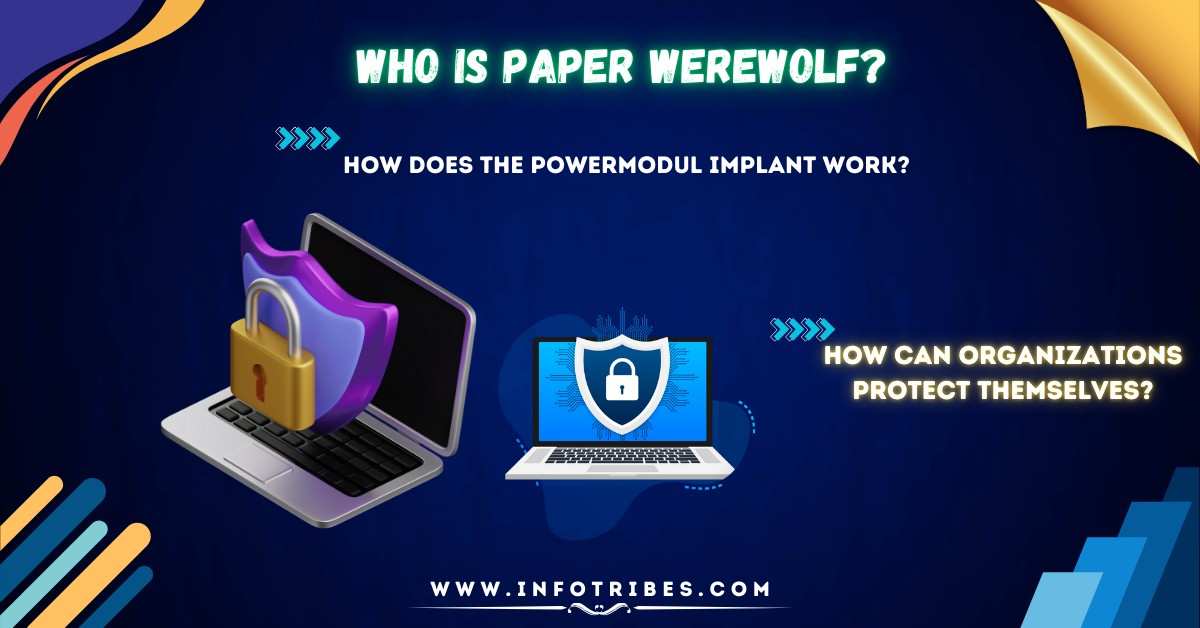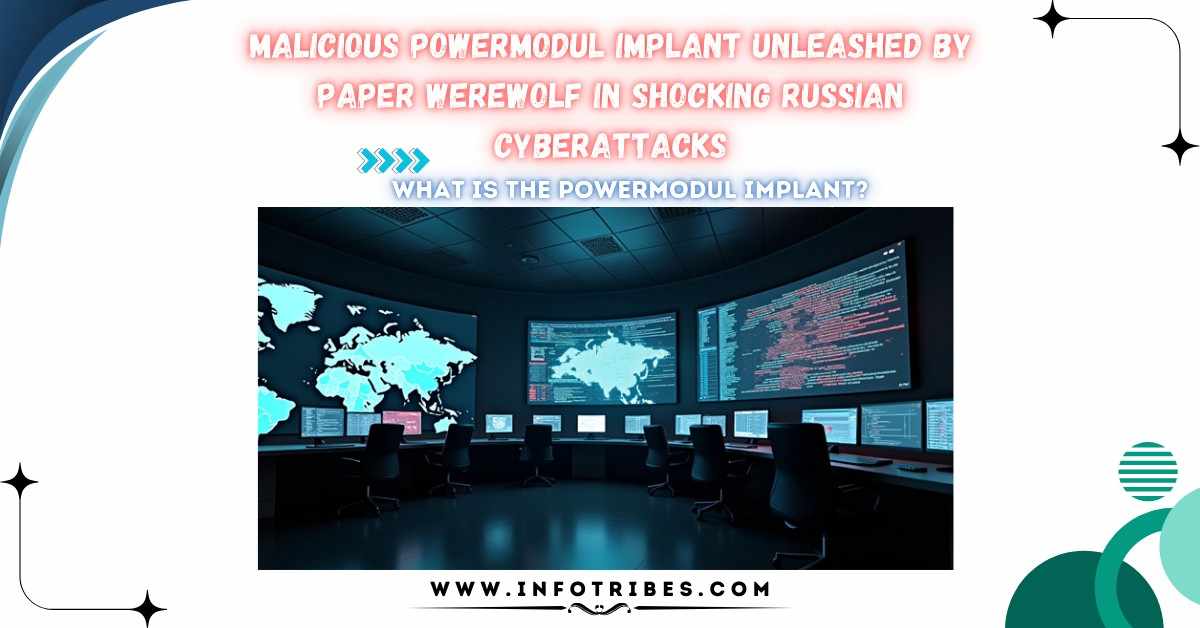The latest discovery of the dangerous malware implant named PowerModul Implant emerged among security experts during the past months. The tool functions as part of numerous cyberattacks against Russian vital sectors. The attacks originate from a cyber operation group called Paper Werewolf. Specific intelligence indicates that Paper Werewolf operates as a highly capable hacking group potentially supported by a country.
- The PowerModul Implant has created a global stir in the cybersecurity sector. Attackers utilize this concealed tool to monitor their targets because it provides them with clandestine data theft capabilities and system destruction capacity. This article details all information about the PowerModul Implant along with its hacker originators and their destructive activities against Russian organizations.
What Is the PowerModul Implant?
The PowerModul Implant functions as computer malware known as an implant which stays concealed within affected computers. After a successful installation the tool enables total control of all affected systems for hackers. The implant can:
- Steal important files
- Record what the user types
- Send data to hackers
- Install other malware
- Avoid detection by antivirus tools
- Any infected system faces a severe risk due to the consequences of having the PowerModul Implant active.

Who Is Paper Werewolf?
The cybercriminal group Paper Werewolf operates by using its self-named designation for various years. Competent cybersecurity researchers think that Paper Werewolf operates under the support of a major governmental organization. The group performs precise cyber offensive operations which target critical government systems and business establishments in foreign countries.
- The group known as Paper Werewolf now directs its attacks against Russian computer systems. Security experts suspect the hackers want to degrade Russian infrastructure capabilities while attempting data theft operations. PowerModul Implant acts as the main hacking tool within these attacks.
YOU CAN ALSO READ: DOGE Staffer ‘Big Balls’ Linked to Cybercrime Ring: Exclusive Records Reveal
How Does the PowerModul Implant Work?
The PowerModul Implant functions through a progressive operation. The hackers employ a tactic to entice someone into downloading dangerous files. The resulting file installation occurs through fake websites and unauthorized emails. After its opening by a user the implant operates without any detectable action.
- The PowerModul Implant starts its covert operations following the installation phase.
- The program operates from within the system framework in a way that conceals its presence behind other applications.
- The implant establishes an association with hacker-managed servers to transmit stolen data.
- The implant has an automatic capability to obtain new commands from its operators.
- The implant has the ability to obtain different dangerous software applications for hacking purposes.
- Cybercriminals use the PowerModul Implant as a flexible deadly tool because of its capabilities.
- The Russian economic sectors have become preferred targets for their attackers.
ultiple important organizations maintain presence in Russian sectors that include:
- Defense
- Energy
- Banking
- Transportation
- Government services
These important national sectors remain fundamental to maintain the functioning of the country. Criminals now attack Russian sectors using the PowerModul Implant. Attacking these areas can:
- Create confusion and panic
- Interrupt normal services
- Damage the economy
- Gather secret information
Security professionals state that these cyber assaults include meticulous preparation and produce significant harm.
The PowerModul Implant demonstrates dangerous capabilities that rendered it harmful to users
The PowerModul Implant exceeds the dangers of common malware because of various reasons which include:
- This tool embeds its code within standard system tools for concealment.
- The implant features modular functionality which allows it to modify sections for executing different orders.
- The implant functions continuously and continues being active when the computer gets rebooted.
- The system receives fresh instructions constantly from hackers through its command-control system.
- The PowerModul Implant stands as a base threat to cybersecurity due to its distinctive features.
How Can Organizations Protect Themselves?
The defense against PowerModul Implant requires organizations and government offices to implement the following protective measures:
- Apps need regular updating because it resolves existing security vulnerabilities.
- Strong firewalls act as protective barriers to eliminate dangerous network communication attempts.
- Organizations should teach employees to stay away from suspicious emails that are known as phishes.
- Implement both antivirus systems together with threat discovery features.
- Data backup protocols should be implemented frequently to decrease data loss.
- Security teams perform network scans with special tools when inspecting their infrastructure based on available threat reports for the PowerModul Implant indicators.

Global Reaction to the Attacks
Organizations worldwide maintain continuous monitoring of this situation through their cybersecurity teams. Some cyber-security analysts view the current attack sequence as the emerging phase of an underground organizations digital warfare. The PowerModul Implant showcases how contemporary hackers have reached advanced stages in their practices.
- Several state authorities have notified their departments together with companies to exercise enhanced caution. The PowerModul Implant spread has been slowed down by cybersecurity companies who distribute vital fixes and security updates.
YOU CAN ALSO READ: Paytm Financial Crime Notice: No Business Impact, Says Company
Final Thoughts
The widespread use of PowerModul Implants in cyberattacks emphasizes the dangerous conditions which exist in present-day digital environments. The dangerous nature of modern hacking demonstrates itself when Paper Werewolf and similar teams deploy powerful tools that breach any type of security system. Organizations need to be more vigilant and practice standard security procedures to collaborate against cyber threats at a time when security dangers are at their highest.
FAQS
1. What is the PowerModul Implant?
- ANS: Advanced malware tool dubbed PowerModul Implant serves as the bearer of cyberattacks. Through its stealth capabilities the implant permits cybercriminals to dominate compromised systems by stealing data and sneaking more malware which stays invisible to detection systems.
2. What organization operates the PowerModul Implant attacks?
- ANS: The Paper Werewolf cybercriminal group utilizes the PowerModul Implant to conduct attacks which focus primarily on the Russian sectors.
3. What elements make the PowerModul Implant such a dangerous tool?
- ANS: The PowerModul Implant demonstrates a serious threat to users through its features including automatic self-hiding alongside update capabilities and tool installation functionality and data transmission that occurs in real-time to hackers.
4. Through what methods does the PowerModul Implant infect systems?
- ANS: The infection normally respects entry points established through dishonest emails and fictitious download options. Software implantation begins immediately after users engage with the wrong file or link without their knowledge.
5. The PowerModul Implant targets specific Russian industrial sectors for its attacks.
- ANS: PowerModul Implant actively targets energy and finance along with defense sectors in addition to transport and government service industries within the Russian space.
6. The PowerModul Implant has the capability to be extracted from its host system.
- ANS: Yes, but it’s difficult. Proper removal of the PowerModul Implant requires specialized cybersecurity equipment operated by experts who focus on this operation.
7. I require methods to shield my system against PowerModul Implant.
- ANS: Workers should update their software and avoid unknown links while using antivirus programs and receiving training about cyber threat identification for workplace security.
